How to make a wood-burning stove for a swimming pool with your own hands: step-by-step instructions
The most profitable fuel in terms of losses is considered to be fuel briquettes and firewood, since storage losses are smaller and the ash content is low. Therefore, choosing a wood-burning stove for a pool will not seem like an unusual decision, given the low price of fuel and the fact that you will have to heat a huge amount of water. In addition, when burned, wood does not produce the same kind of burning as coal or liquid heating oil.
The content of the article:
Wood burning stove options for pools
You need to choose a specific model based on 3 basic parameters:
- A design that could be installed and connected with your own hands in a house or bathhouse without major remodeling of the room.
- Furnace power. It should be enough with a margin of 30-40%. Unlike gas and briquette stoves, the thermal power of the firebox largely depends on the quality of the firewood.
- Duration of combustion with one fill at minimum power.
Everything is clear with the last point. The body and design of the wood stove should be easy to carry so that you can bring it to the pool, install it and use it as needed. For the winter or at the end of the season, put it in the utility room.
It’s more difficult with the power of the firebox.First, you need to calculate the heat output of your pool heater based on the volume of water. Secondly, determine the size of the firebox taking into account a single loading of firewood. Third, choose a scheme.
Stove with a horizontal firebox
One of the most practical and convenient designs. In fact, this is a simplified version of a wood-burning sauna boiler. The furnace itself is assembled from two cylindrical bodies inserted into each other.
Inside the barrel there are cast iron grates, and on the facade there is a massive hanging door, like a locomotive firebox. A chimney is installed on the rear side.
Heat is extracted by burning wood using a massive copper coil bent from thick-walled copper tubing.
The scheme turned out to be quite successful; its power, when fully loaded with firewood, is enough to heat large pools with a volume of up to 10 m3.
Similar stoves specifically for swimming pools can be found on sale. They are safe and easy to use.
You can add a large charge of firewood, which will be enough for several hours of slow burning and heating of the water in the pool.
The only drawback of this scheme is the increased complexity of manufacturing. It is quite difficult to properly build a stove with a horizontal firebox with your own hands. But if you have experience and the appropriate equipment, then you can make a small wood-burning stove for the pool, similar to a sauna stove with a heater.
Wood-burning structures such as potbelly stove
Essentially, this is the same sauna heater with a heat exchanger built inside. You can buy a ready-made potbelly stove, and not necessarily the classic cylindrical shape.
It would be more convenient to make a universal wood-burning heater.Use a ready-made steel or cast iron stove as a base. You just need to weld the heat exchanger inside, and you will get a stylish and reliable water heater for the pool.
Advantages of such ovens:
- High heating capacity - up to 20 kW/h.
- Quick ignition, the potbelly stove reaches operating mode for burning wood in 10-15 minutes.
- Closed design, no open flame, no sparks. Thanks to the chimney, smoke quickly disappears, which significantly increases the convenience of using the pool.
In addition, the combustion chamber, closed on all sides, ensures relatively small heat losses; all the energy from burning wood is spent on heating water for the pool.
The only disadvantages noted are the significant weight and high center of gravity of the structure. If the chimney is higher than 2.5 m (optimal height), the stove may fall due to a strong shock or gust of wind.
Healthy: Design and principle of operation of a gas water heater for heating a swimming pool.
Furnaces with open heat exchanger
They are used to heat water in relatively small swimming pools. Most often, the design is a regular coil made of steel or copper pipe, installed in a body welded from stainless steel.
A wood-burning stove with a built-in heat exchanger is often used to heat water in the field; they are mass-produced for heating greenhouses, greenhouses, and even car washes.
The firebox is usually of a vertical type, with firewood loaded from above. The water stove is relatively light (up to 12 kg) and easy to operate. The only problem may be making the coil. It can be bought ready-made and is used to heat water in wood-burning sauna stoves.
Submersible furnaces
Unlike previous models, they are installed directly into the pool bowl filled with water. Used mainly in the cold season at air temperatures of 4-12OC. Such stoves are also called winter stoves. According to the owners, if you choose the right firewood, you can swim in the pool in winter.
Loading firewood into the firebox is done from above. This is best done from the side, so stoves of this type are used mainly for stationary pools with concrete walls and a hard bottom.
Homemade products
In addition to proven designs, there are a large number of original homemade designs of stoves for heating a pool in the country.
For example, heating can be organized using a regular cast-iron radiator placed on a grill made from a gas cylinder. But loading firewood will not be very convenient. Such a stove is interesting because the structure can be assembled in half an hour, and no scarce parts are required.
Instead of a cast iron battery, you can use a car radiator or simply lay the coil on a stone stove made of crushed rubble. However, such stoves are not easy to maintain and often heat the pool water too slowly.
How to make a wood-burning stove for a swimming pool with your own hands?
The specific furnace design must be selected depending on the required heating power. In addition, it is necessary to select the appropriate material for the heat exchanger, as well as perform calculations on firewood consumption. The power of the stove directly depends on the volume of the firebox and the amount of firewood that fits.
Selection of materials and tools
If you need a large, powerful furnace, it is best to use stainless or low-alloy steel for its manufacture.To make the body, you need welding, semi-automatic carbon dioxide or argon. To strip the metal, a nozzle with bronze bristles and a grinder will be used.
You can use mild steel metal pipe to make the coil. The best option is to use a copper pipe with a diameter of 12-18 mm. It is used in air conditioners and refrigeration machines.
In addition, you will need:
- gas cylinder 20-50 l;
- steel reinforcement 8-12 mm thick;
- ball valve;
- thermometer;
- water pump.
You will also need to prepare a small supply of firewood to test the stove before connecting to the pool.
Selection of design scheme
The design of the furnace directly depends on the size of the pool. The larger the volume or area of the mirror, the more heat is needed, and therefore more firewood, to initially heat the water. Small stoves with a built-in coil can produce up to 4 kW/h of thermal energy. This is enough to maintain the water temperature in a small pool, for example, a wooden tub or frame-type container.
For full-size pools with a 3x4 m mirror, a small stove will not be enough. For heating, you will have to use not a coil, but a homemade long-burning stove-water heater with double walls. The volume of the firebox must be calculated and the correctness of the calculation checked in practice.
How to calculate the heater power?
To make a stove, it will be necessary to determine the volume of the firebox and the amount of wood burned, provided that the pool needs to be heated in a maximum of one hour.
First of all, you need to calculate the volume of water. For example, we use a standard model with a diameter of 2 m and a depth of 1 m. In this case, the bowl holds V = (3.14 * 22*1)/4= 3.14 m3 liquids.
In order to heat such an amount of water, a certain amount of heat Q will be required. To do this, you need to multiply the specific heat capacity of water (C = 4.18 kJ/kg*K) by the weight and temperature difference T2-T1. For example, a stove needs to heat 3140 kg of water by 10OC. For a pool with a capacity of 3.14 m3 amount of heat Q= 4180*3140*10=131252000 J or 131 MJ. If we translate it into a more familiar form, then 36 kW/h.
When burning 1 dm3 birch firewood produces 2.6 kW/h of heat. Accordingly, in 1 hour you need to burn 14 dm3 birch trees After this, the furnace can heat the water only by maintaining the water temperature at the desired level. That is, in order to heat water with wood, you need to ensure a heat flow of 10 kW/h for each cubic meter of pool volume.
If we take into account heat losses at the level of 20%, then to heat water with a stove you will need a firebox with a volume of at least 20 liters. In this case, the degree of filling of the firebox with firewood must be at least 90%. The diameter of the heat exchanger pipe is 15-18 mm.
It is best to make a stove for a pool from an old gas cylinder.
Read: Do-it-yourself stove laying.
Step-by-step manufacturing instructions
When calculating the characteristics of the furnace and the dimensions of the firebox, several important parameters of the future water heater were not taken into account:
- wall material;
- level of losses when heating water;
- the speed of water flow through the heat exchanger pipe.
It is quite difficult to calculate their effect on the efficiency of heating water in a furnace. You can adjust the degree of water heating using an electric pump. By changing the pump performance and water flow through the pipe, you can make the flow hotter or cooler.
Heat exchanger manufacturing
It is best to use a copper pipe with a diameter of 18 mm and a wall thickness of 1.5 mm for the furnace. A workpiece with a length of at least 20 m will be required.To make a coil you need:
- fill the pipe with dry sifted sand;
- hammer the holes at both ends;
- place a wooden piece with a diameter of 20 cm in a vice;
- make a loop, secure it and wrap the pipe around the workpiece.
For normal operation of the furnace, at least 15 turns will be required. The pipe is annealed, after which the plugs are removed and the sand is removed. The outer surface of the copper must be cleaned with fine sandpaper and blackened with an etching solution.
Checking the functionality of the heating circuit
Before assembling the stove, you need to check the efficiency of its operation with wood. The calculation of heating water in the pool was carried out without taking into account the material and thermal conductivity of the walls of the heat exchanger. Therefore, it is necessary to make sure that the firebox, with standard firewood, is capable of heating water to a temperature of at least 50OWITH.
To do this, we assemble a temporary housing, you can take any metal box, lay grates made of reinforcement on the bottom and install a coil. Next you need to connect the hoses, pump, and put firewood inside. We light the logs and turn on the water supply. After the firewood has ignited, you need to measure the temperature of the water. If the thermometer shows the required temperature, then you can make a permanent housing.
In addition, you need to adjust the water flow through the heat exchanger. In order for the heat from burning wood to be fully used, it is required that the flow rate through the stove coil be at least 1-1.3 l/s. If the flow rate is less than 0.5 l/s, then the water in the oven may boil.
Manufacturing of the furnace body
You will need a whole gas cylinder, maybe not a new one, but most importantly, not a rusty one. All you have to do is cut out the bottom and the lid with the valve.
The next stage is cleaning the surface from rust and paint to “white” metal.This must be done, otherwise the paint will burn during the burning of the wood. To prevent the metal from rusting, you can treat it with phosphoric acid and let it stand for a day in a cool place. Then wipe with a damp cloth and dry.
Next, you need to weld the coil and install the legs; they are also made from reinforcement. After assembly, you need to make a control stack of firewood to determine the actual volume of fuel that fits in the firebox.
All that remains is to tile the area in front of the pool, lay and connect the hoses and pump and make the first start.
Advice! The stove will heat water for the pool using any wood, but to speed up the ignition process, you can use an extension chimney pipe.
By increasing the draft, the firewood burns faster. But then it is better to remove the chimney, since a large amount of heat escapes from behind the pipe.
Operation and maintenance of a wood-burning pool heating system
The firebox will work best with birch, oak, acacia, and ash wood. Firewood made from poplar, pine or spruce is definitely not suitable. The first one produces too little heat to heat the pool; coniferous species emit a large amount of resin. It is enough to heat the stove once with pine logs so that a thick layer of resin and soot appears on the heat exchanger.
How the oven is usually used:
- Before ignition, small wood chips and paper are placed in the firebox, lit and allowed to burn at least halfway.
- Larger logs are laid, the water supply is turned on, and a chimney is mounted on top.
- In an hour, you will need to knock out some of the ash through the grate and lay in a new portion of firewood. Instead of a chimney, the upper edge of the stove is covered with a steel sheet, leaving only a small gap.
The firewood will slowly smolder rather than burn, and the heating power will be reduced by about half. The hoses from the pool to the pump will need to be looped, the firebox will heat the water to the desired temperature. In this mode, the stove can operate for up to 2.5 hours, until all the wood in the firebox burns out.
The pump must run continuously while the wood in the stove is burning. If you need to urgently stop heating, simply fill the firebox with a small amount of water.
Results
A wood-burning stove for a pool is considered one of the simplest and most economical heating options. Construction of a firebox is inexpensive; the main costs are associated with the manufacture of the coil. In addition, the system will be safe, since no volatile or liquid fuel is used for combustion.
Tell us about your experience in making stoves for heating pool water. What designs do you think are best for a home pool? Also bookmark the article and share it on social networks.

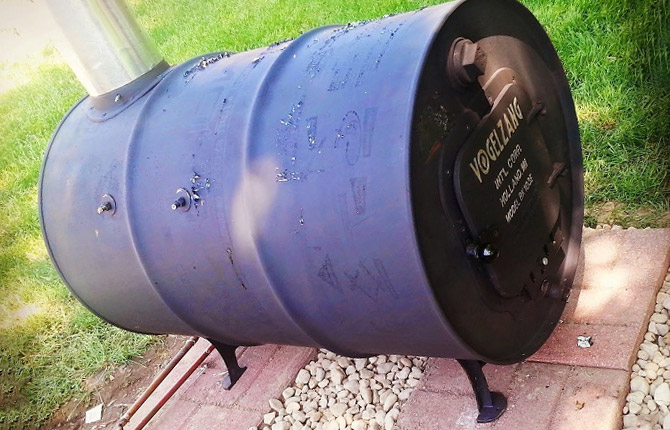
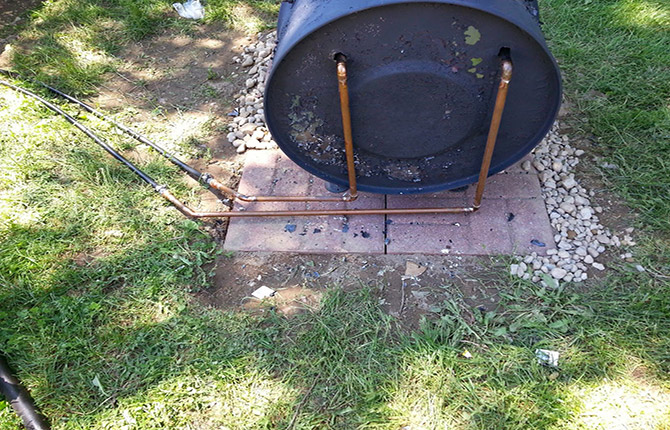
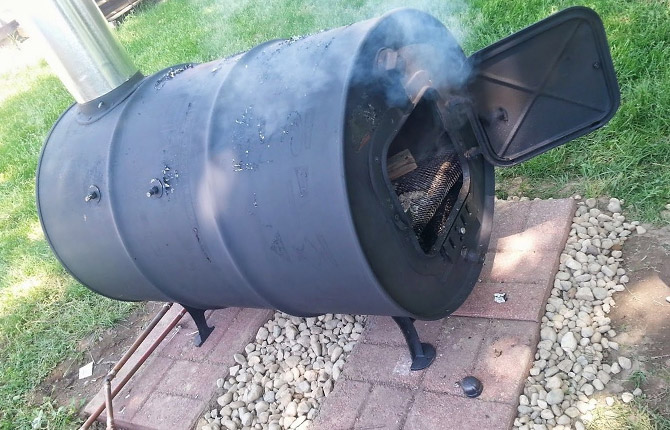
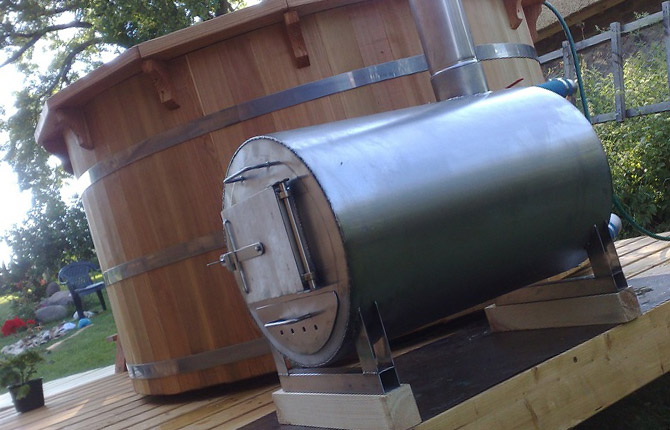
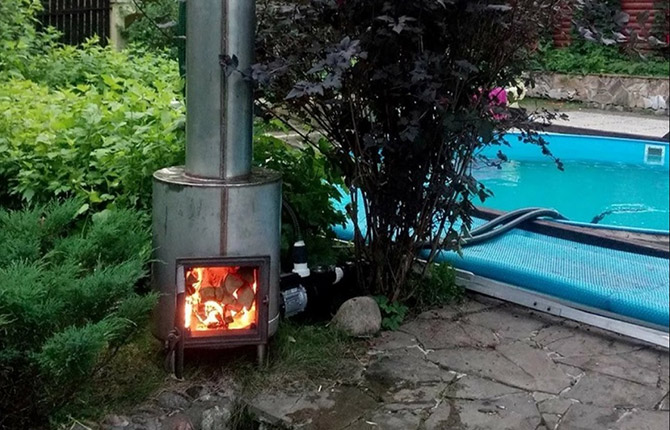
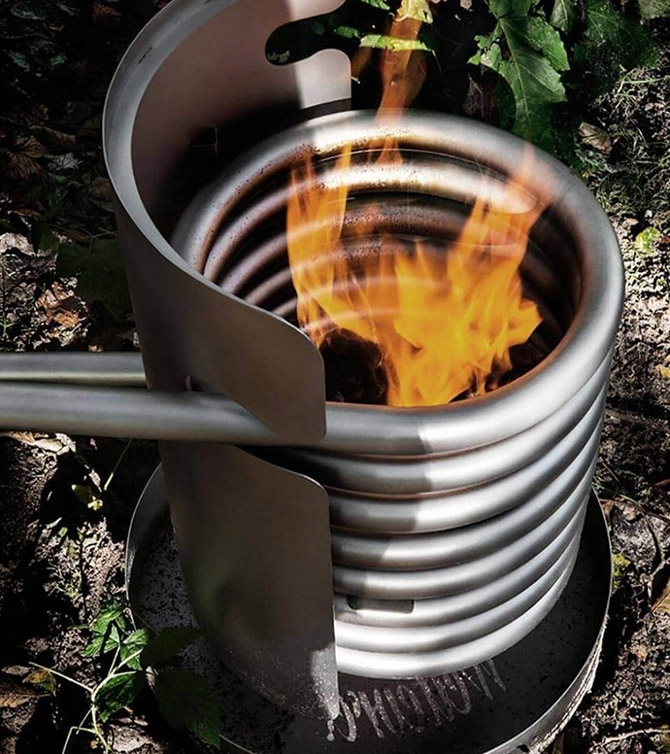
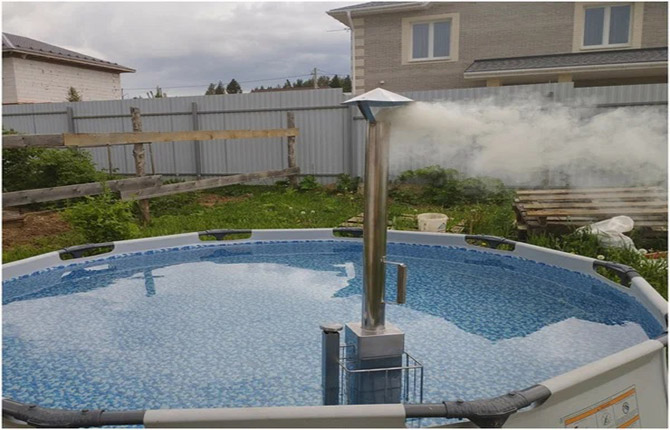
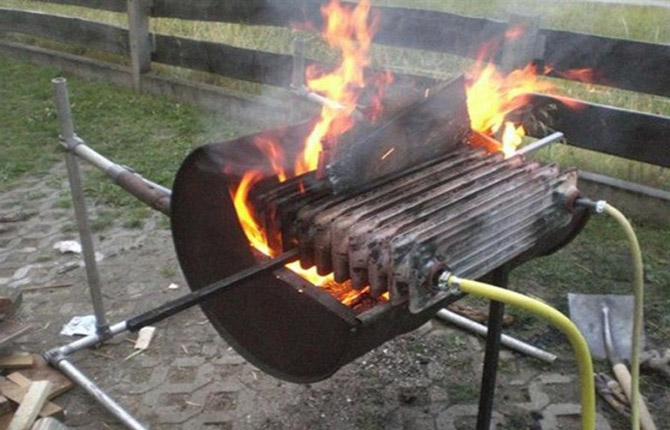
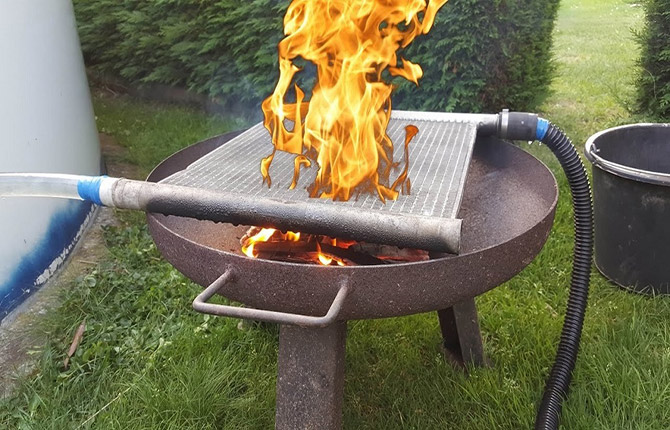
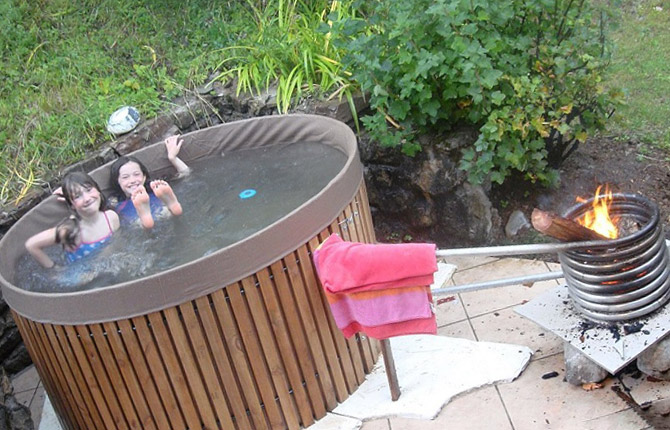
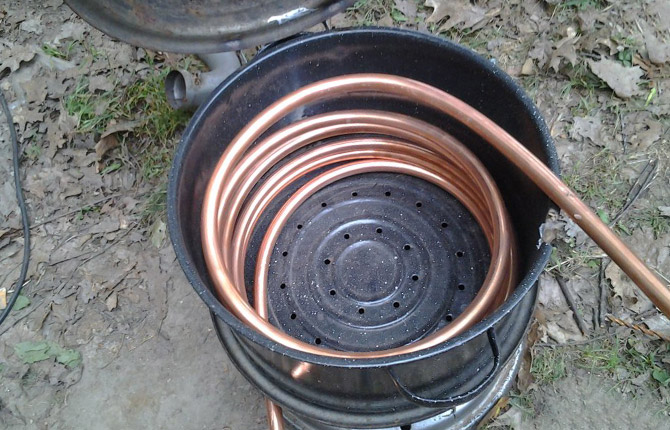
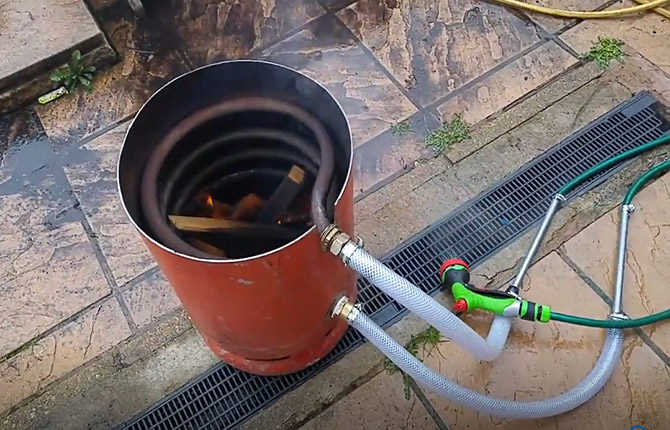


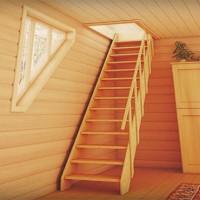
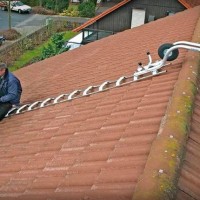
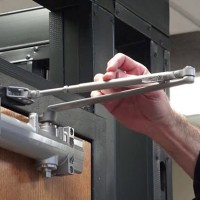
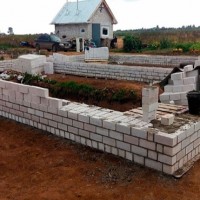
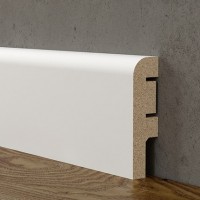




In my opinion, peat or coal briquettes are more profitable. There is residential coal, there is no smell when burning. Heats twice as fast as wood. Only the stove body will need to be made of cast iron. I use this stove to heat both the pool and the dacha in the fall and winter.
In such a stove there will be a weight of 50 kilograms. It’s easier to surround one coil with a stone and throw either coal or firewood into the firebox - everything will burn.